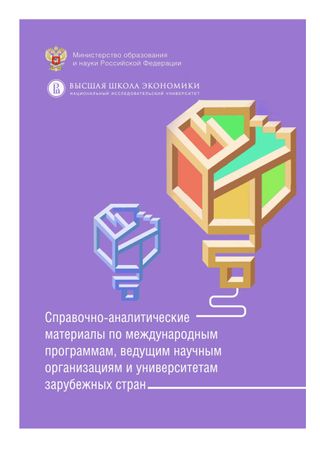?
Справочно-аналитические материалы по международным программам, ведущим научным организациям и университетам зарубежных стран
Reference and analytical materials contain generalized, structured information on programs and instruments of international scienсe and technology (S&T) cooperation (aiming both Russia and other international countries), leading scientific organizations and universities of 12 foreign countries (USA, Canada, Germany, France, Great Britain, Japan , Republic of Korea, China, India, Brazil, South Africa, and Kazakhstan). The materials are based on the results of HSE's analysis of programs and tools of international S&T cooperation, as well as on the results of bibliometric analysis of the publication activity of 12 foreign countries (using the Scopus and Web of Science databases). In the preparation of this collection, official sources of information (including electronic sources) of foreign ministries, associations, funds, universities and programs in the field of international S&T cooperation were consulted. The handbook is intended for heads and managers of Russian scientific organisations and universities involved in the development of international S&T cooperation.
The research leading to these results has received funding from the Ministry of Education and Science of the Russian Federation in the framework of the project “Development of Instruments for Methodological, Information and Analytical Support of Russia’s Scientific Organizations and Universities’ Participation in International Science and Technology Cooperation” (Subsidy Agreement no 14.602.21.0013 dated August 3, 2016 with the Russian Ministry of Education and Science in the framework of the federal targeted programme “Research and Development in Russian Priority S&T Development Areas in 2014–2020”, unique identification number – RFMEFI60216X0013).
